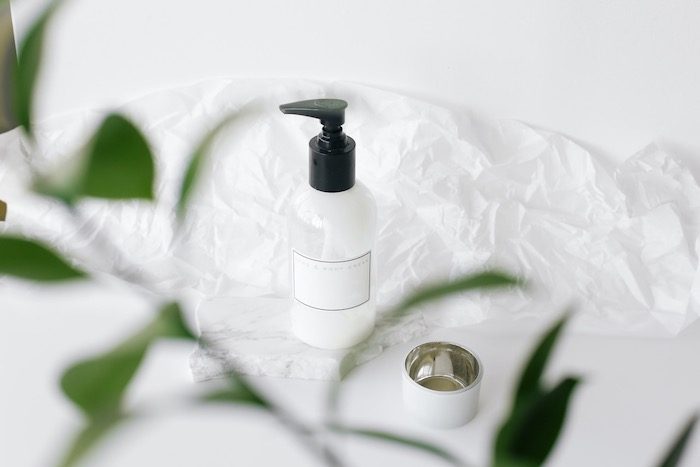
Has the cold, dry weather left you with a winter dry skin rash?
If so, we can help.
 What is a Winter Dry Skin Rash?
What is a Winter Dry Skin Rash?
The cold, dry air that is common throughout much of the country during the winter can easily sap moisture from the skin.
In the winter, humidity drops, which means that cold air is much drier than warm air. When you turn up the heat, that also saps moisture from the air. And dry air seeks moisture from your skin, pulling it away from you.
This may happen for two reasons:
Your Skin is Compromised
The outermost layer of the skin consists of dead skin cells mixed with natural skin oils that are made by the underlying living skin cells. These skin oils keep the water inside the skin from evaporating into the air. Both the skin oils and the dead skin cells hold moisture in.
If those oils in the outer layer are depleted, however, or the layer is compromised by microtears and holes, the moisture inside the skin can more easily get out. Harsh cleansers and chemicals in skincare products can damage this outer layer, causing this problem.
Your Skin is Dry to Begin With
If you naturally have dry skin, and then you fail to use a quality moisturizer or to use it often enough, you may end up with dry, itchy skin during the cold winter months. Dry skin is compromised skin, as it develops cracks into the surface that allow even more moisture to escape.
Those with dermatitis, rosacea, eczema, or psoriasis are often more at risk for dry winter rashes, as their skin is already sensitive and can easily suffer from excessive dryness and inflammation.
What Does a Dry Winter Skin Rash Look and Feel Like?
A winter rash is an area of irritated, red skin that may also have some swelling. It may appear anywhere on the body, from the face to the legs, arms, and hands.
As the rash gets worse, it can also create flaky skin, bumps, blisters, and will make the skin feel itchy, sensitive, and sometimes painful.
7 Ways to Treat and Soothe a Winter Dry Skin Rash
1. Check your cleansers.
Avoid using bar soap and make sure all of your cleansers, including your face and body cleansers, are gentle and moisturizing. If your skin feels tight after cleansing, your cleanser is stripping the oils from your skin and leaving it dry. Opt for a mild, moisture-rich, fragrance-free cleanser, then pat dry after cleansing.
 2. Apply moisturizer immediately after cleansing.
2. Apply moisturizer immediately after cleansing.
Don’t wait—apply your moisturizer right away! If you wait, the air will pull the moisture from your skin, leaving it parched. Then when you put your moisturizer on, you’ll be starting from behind, so to speak. That means your moisturizer will have a harder time doing its job of hydrating your skin.
So always apply moisturizer directly after cleansing, even if you cleanse several times a day (as with hand-cleaning).
3. Choose a quality moisturizer.
Many of today’s store-bought moisturizers are made up of water, petrolatum products, and surface moisturizers that will not penetrate the outer layer to moisturize the skin. If your skin feels dry an hour after moisturizing, you may need to get another moisturizer.
Our CV Skinlabs products provide head-to-toe relief for dry skin in winter. Choose our Calming Moisture for Face, Neck, and Scalp, and our Body Repair Lotion for all other areas. They include natural ingredients that help calm and soothe itchy skin, with other ingredients that help heal, replenish moisture, and restore the outer skin barrier.
4. Create a barrier on your skin.
While your own barrier is compromised, it can help to create another barrier with our Restorative Skin Balm. It seals in moisture and then serves as a barrier between your skin and the outside elements. Petrolatum-free, it’s a non-steroid formula that helps ease itching while healing inflamed skin.
A trio of natural antioxidants, including calendula, sea buckthorn oil, and arnica, also help protect the skin while it’s healing from the harsh winter weather.
This balm is particularly helpful if you already have a winter dry skin rash. Apply the balm as often as needed.
5. Regularly hydrate throughout the day.
Your skin naturally needs more moisture in the winter, so you may want to get into the habit of applying moisture more than twice a day. If you don’t want to use lotion or cream, try our Rescue & Relief Spray. You can spritz it over or under makeup for a hydrating refresher at any time.
This spray is light and will not clog your pores. It’s also moisturizing, including aloe and cucumber to calm and soften skin, while water lily helps purify skin and relieve itch.
6. Get a humidifier.
The dry air makes it much harder for your skin to hold onto its own moisture. Even if it’s healthy and strong, it will still be fighting a daily battle against that dry air to keep the moisture it has.
You can make it easier by using a humidifier to put moisture back into the air in your home. At the very least, have one in your bedroom so that the air you’re exposed to overnight will be good for your skin. It will help you wake up with refreshed, healthy-looking skin.
7. Wear protective clothing.
Whenever you need to go out into the harsh weather, use clothes to protect your skin. Hats, gloves, scarves, and other protective gear can help keep your outer skin layer healthy and strong, and will also provide a barrier between your skin and the harsh winter elements.
Photo by Ann poan from Pexels.
Do you suffer from a winter dry skin rash?

